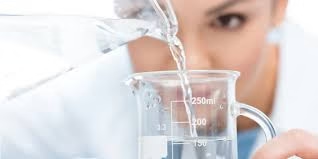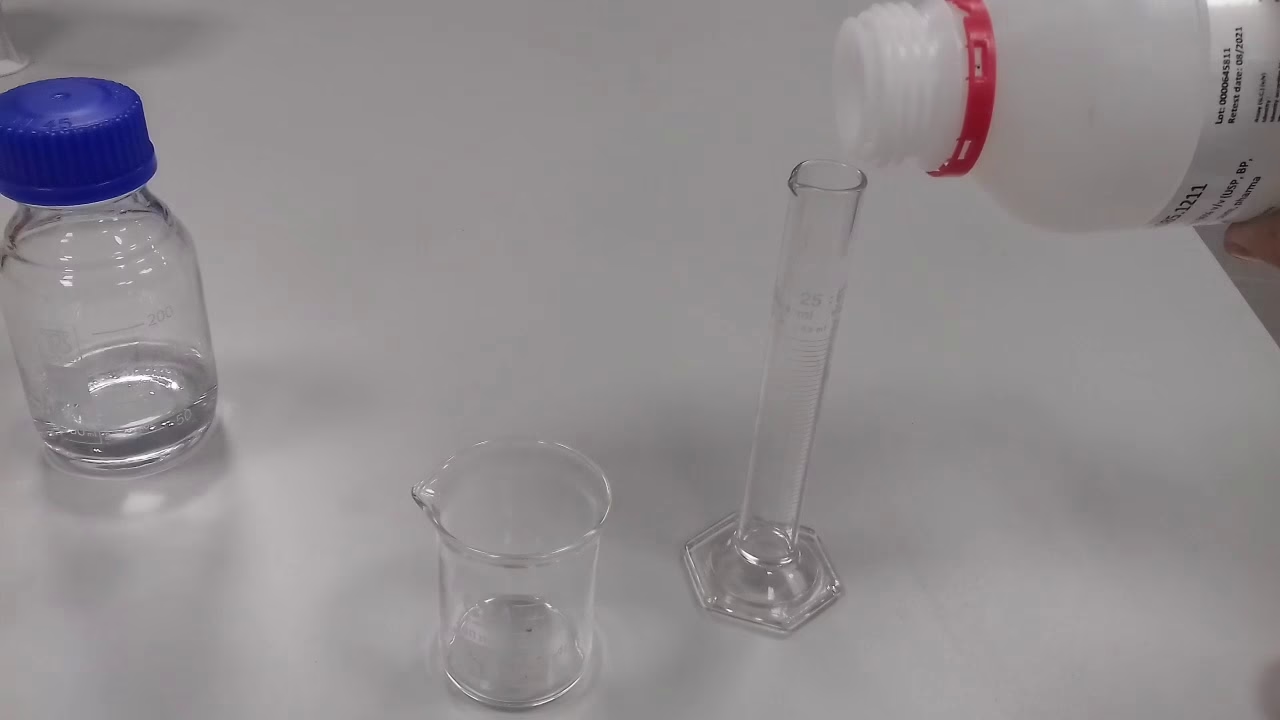
Introduction
- In histopathology, the use of alcohol solutions is crucial for preserving and fixing biological tissues.
- Alcohol, specifically ethyl alcohol, is widely used for tissue fixation, dehydration, and in various other laboratory procedures.
- The preparation of alcohol solutions with specific concentrations, such as 70% (v/v) alcohol, is essential in these procedures.
- A 70% alcohol solution is often preferred because it is effective in fixing tissues, preventing degradation, and allowing better penetration of the tissue for further processing.
- This procedure outlines the preparation of 200 mL of 70% (v/v) ethyl alcohol from commercially available ethyl alcohol, commonly available in concentrations of 95% or 100%.
- The preparation involves diluting higher concentrations of alcohol to achieve the desired 70% alcohol solution, which is commonly used in histopathological applications such as tissue preservation, dehydration, and staining processes.
Materials and Requirements
Materials:
Commercial Ethyl Alcohol (100% or 95%)
Commonly used in histopathology labs.
Available in concentrated forms (100% or 95%).
Distilled Water
To dilute the alcohol to the required 70% concentration.
Graduated Cylinder or Pipette
For accurately measuring liquid volumes.
200 mL Graduated Flask
For preparing and mixing the final alcohol solution.
Stirring Rod
For thorough mixing of the alcohol and water.
Protective Gloves
For personal protection when handling chemicals.
Labeling Material
To label the prepared solution appropriately for future use.
Equipment:
Measuring Cylinder (for accurate volume measurement).
Graduated Flask (200 mL capacity).
Stirring Rod (for homogeneous mixing).
Pipettes or Syringes (if precision is required).
Procedure
Calculate the Volume of Alcohol Needed:
Use the dilution formula C1×V1=C2×V2
Where:
= initial concentration of alcohol (either 100% or 95%),
= volume of alcohol required from the initial solution,
= desired final concentration (70%),
= final volume of the solution (200 mL).
For 100% Ethanol:
100 \times V_1 = 70 \times 200 \implies V_1 = 140 \, \text{mL of 100% alcohol}.
So, 140 mL of 100% ethyl alcohol is required.
For 95% Ethanol:
95 \times V_1 = 70 \times 200 \implies V_1 \approx 147.37 \, \text{mL of 95% alcohol}.
So, 147.37 mL of 95% ethyl alcohol is required.

Measure the Alcohol:
Using a graduated cylinder or pipette, measure the required volume of 100% or 95% alcohol:
If using 100% alcohol, measure 140 mL.
If using 95% alcohol, measure 147.37 mL.
Add Distilled Water:
Add distilled water to make the total volume 200 mL:
If using 100% alcohol, add 60 mL of distilled water.
If using 95% alcohol, add 52.63 mL of distilled water.
Mix the Solution:
Pour the alcohol and distilled water into a 200 mL graduated flask.
Use a stirring rod to mix the solution thoroughly, ensuring a uniform mixture of alcohol and water.
Verify the Final Volume:
After mixing, ensure the final volume is exactly 200 mL. If necessary, add more distilled water to achieve the precise volume.
Label the Solution:
Label the container with the contents (70% alcohol), the date of preparation, and the concentration of the alcohol solution. Proper labelling is essential for identifying the solution and avoiding mistakes during future use.
Storage:
Store the prepared 70% alcohol solution in a sealed container in a cool, dry place away from direct sunlight, heat sources, or open flames. Ethyl alcohol is flammable, so safety precautions must be observed.
Applications
Tissue Fixation:
A 70% alcohol solution is widely used for tissue fixation. It helps preserve the structure of tissues, preventing enzymatic degradation, and maintaining cellular morphology for subsequent histological examination.
Tissue Dehydration:
Alcohol, in various concentrations, is used in the dehydration process of tissue samples. A 70% alcohol solution is often used as part of a series of increasing alcohol concentrations to gradually remove water from tissue samples in preparation for embedding in paraffin or other media.
Clearing Agent:
Ethyl alcohol is a common clearing agent in histology. It is used before embedding tissues in paraffin or resin, as it can help in removing water from tissue samples.
Staining Procedures:
Alcohol is commonly involved in the preparation of tissue samples for staining procedures such as Hematoxylin and Eosin (H&E) staining. It can act as a dehydration agent during the staining process.
Disinfection and Cleaning:
In addition to its role in tissue preparation, alcohol solutions are used to clean laboratory equipment and surfaces to prevent contamination in histological procedures.
Tissue Preservation:
Alcohol solutions, especially at concentrations around 70%, are commonly used for long-term preservation of tissue specimens, allowing for their storage without significant alteration or degradation.
